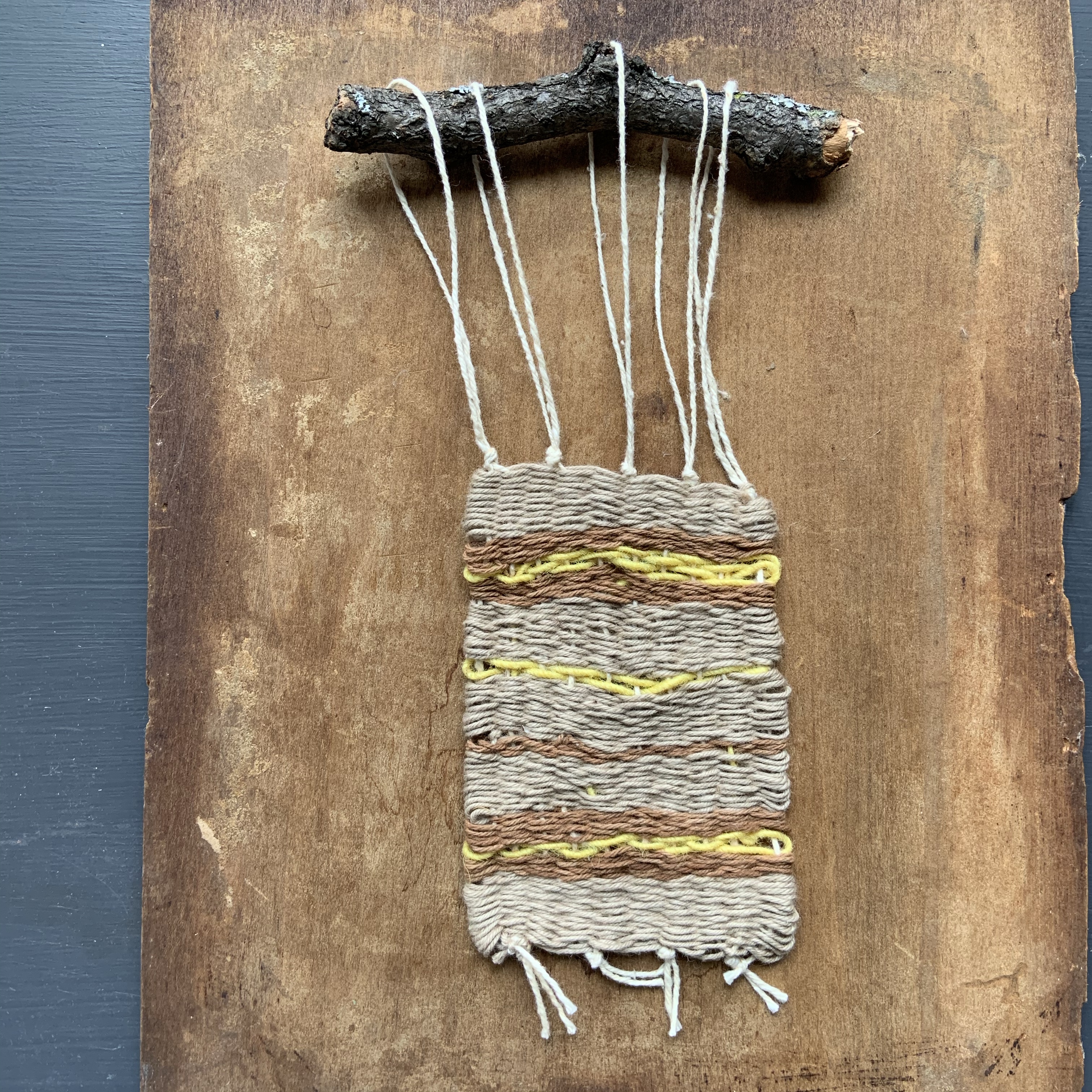
Saturday was dark and rainy, the sort of day that you spend indoors huddled up, moving slowly, drinking warm liquids, binging on movies or a series, and making stuff.
Just the day before, I discovered the Craft in America documentary series, which is probably how I came to the conclusion that it was a good time to learn how to weave.
I’ve done very basic weaving before, although I can’t say that I have ever really known what I was doing. On this occasion, I decided to learn a few proper techniques on a small, wooden loom — called a Todd Loom — purchased for just a couple of dollars at the thrift store. The loom did not come with a box or instructions. However, it did still have a project on it that had been worked by the former owner, so I studied its construction closely before removal, figuring that I could base my approach on what was already there. I also consulted the Weaving for Beginners class by Annabel Wrigley through Creativebug (FYI: this is not a sponsored post for the service) because I wasn’t sure about the processes of switching threads and tying off.
And that is how I spent much of the day: watching Craft in American episodes and manipulating thin threads around other threads. I have not made my way through all of the episodes, but of the ones I did watch, I liked Threads and Quilts best. Messages was not as good as I anticipated, but I really liked the bead work of Joyce Scott.
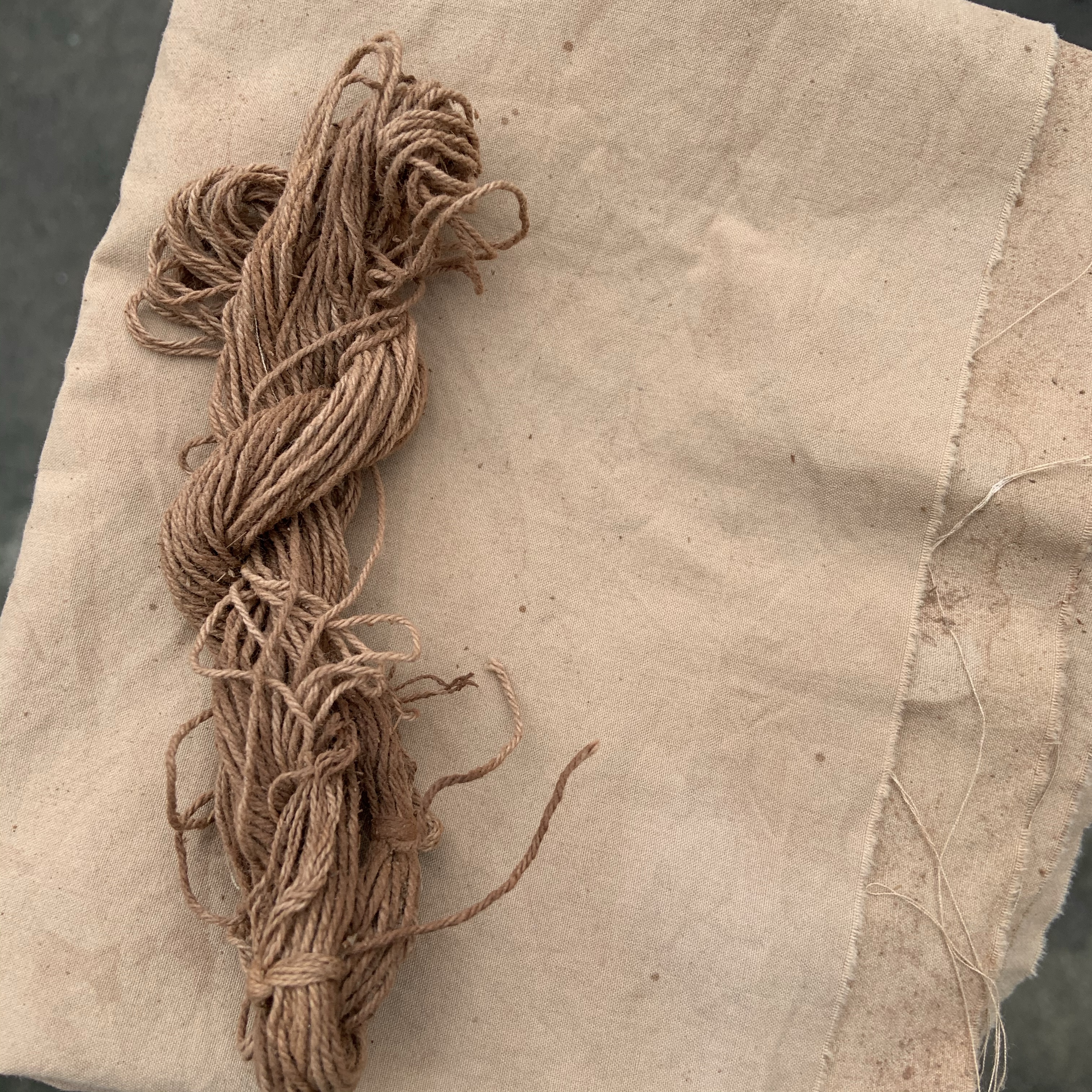
Cotton fabric and thread dyed with rooibos tea aka red bush, a caffeine-free herb from South Africa that has a very dark, red colour. I drank from the tea and then saved the scraps for a month to make a dye bath, so this would have been much darker had I used it fresh. I also did not use any mordants or pre-treatments.
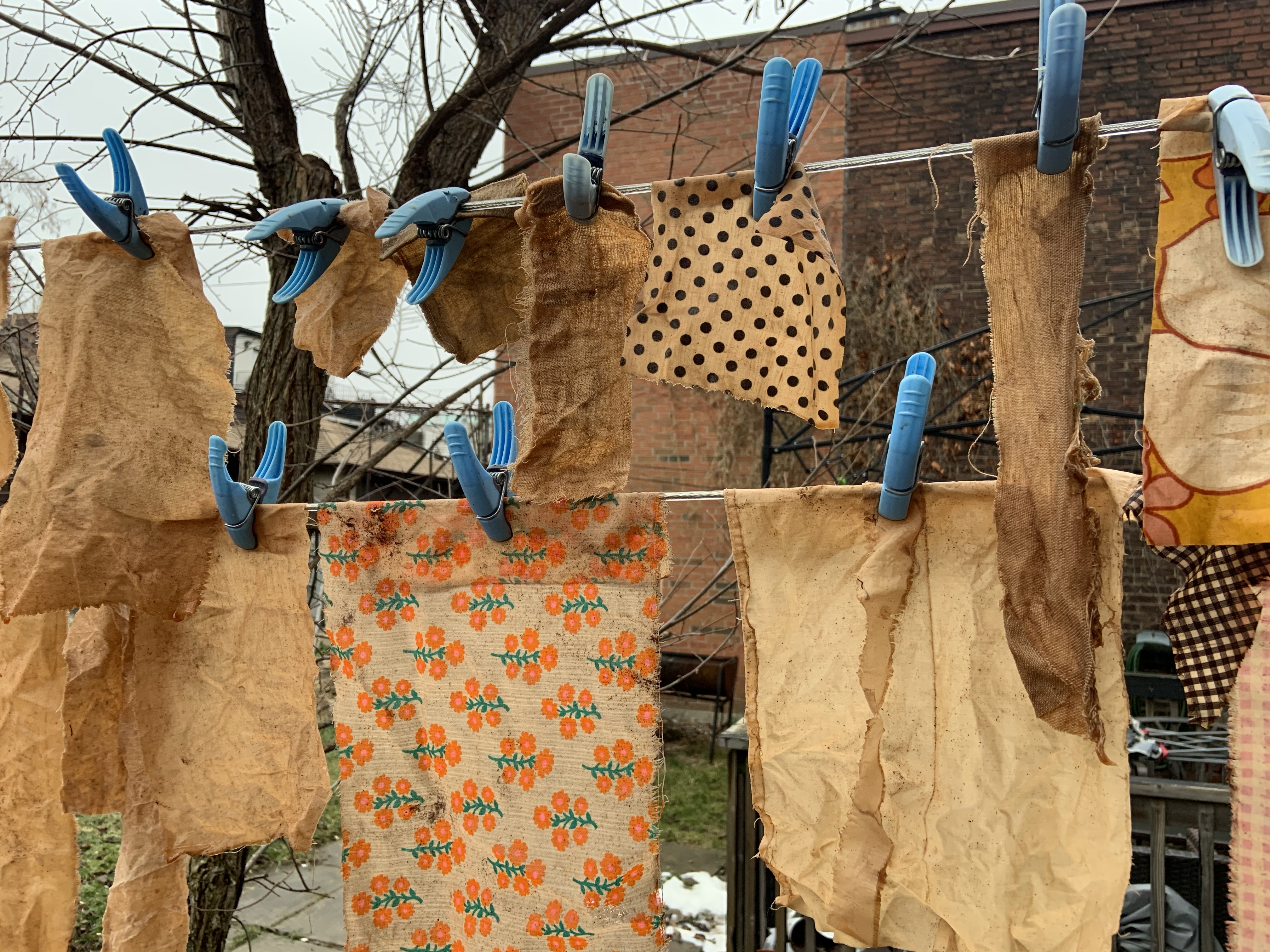
I also dyed these scraps to see how the tea would take in other types of fabrics.
I chose to work with fairly thin threads because I envisioned a rough, but delicate fabric. I didn’t want to make a chunky final product, nor did I want to make a wall-hanging or rug. I used materials I already had in my stash, all thrifted. I chose a cone of cotton thread for the warp the base threads that run up and down). And for the weft (the threads that are woven in): a natural, unbleached cotton or linen; a thicker, scratchy yellow wool that also came from a cone, and cotton that I had recently dyed with used rooibos tea scraps.
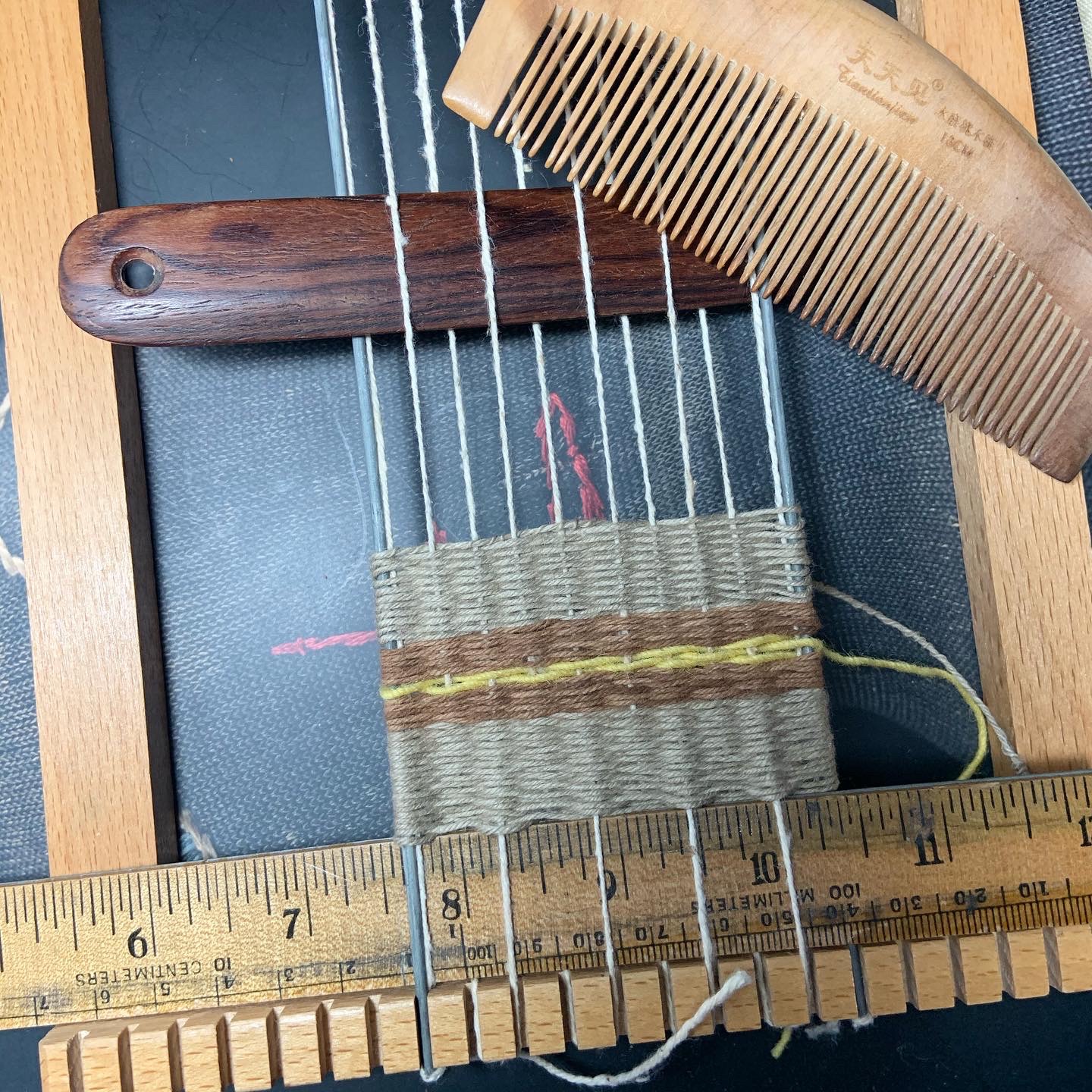
I used tools found around the house: an old a ruler to act as a spacer at the bottom of the loom, a wooden comb to push the weft yarn/thread down, and a wooden paper folder to act as a shed stick (an object that is woven in at the top to open up a space between the threads to make weaving a bit easier. I also used a metal yarn needle. I do a lot of stitching and have a collection of needles in just about every shape and size imaginable.
Alas, the weaving did not turn out as anticipated. I wove those threads tightly, dammit, but when it came time to take the piece off of the loom, it was saggy and wonky, not the structured piece of fabric I had envisioned. [See image at top of page.]
But learning by doing is a process that invites failure and happenstance. I have always been a doer. I read and I watch videos, but I never follow instructions as they are given. Never ever. Instead, my brain takes in the information and immediately starts to improvise. What if I did this instead of that? What if I substituted in this material or ingredient instead of the ones that are listed? I don’t think I have followed a recipe (food, craft, or otherwise) to the letter in my life, save for the recipes of my own making that had to be tested and retested for publication. This is just how my brain works. At 46 years old I’ve mostly come to accept this about myself, but I sometimes struggle with how much harder and more time-consuming it can make things, work, life. The perception being that following rules and staying a prescribed course would be easier. I think that realistically, given the culture we live in, in most cases, following the rules would be “easier.” But it would also make me miserable.
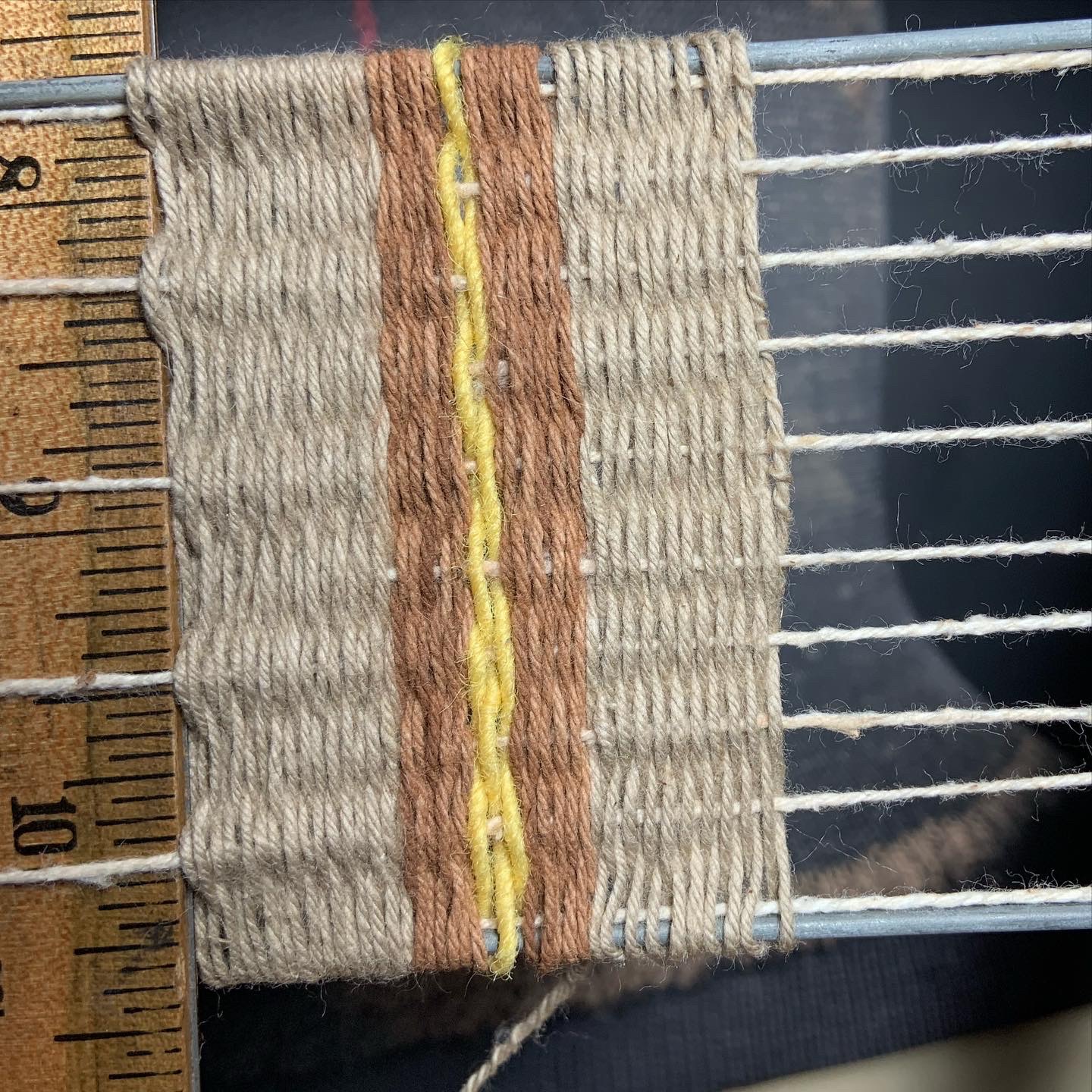
In the case of making this weaving, I knew that using thin threads was going to come back to bite me. Theses sorts of beginner looms/kits suggest you use thicker yarns because they are made with wider spaces for clunky, slower hands that are just starting out and have not yet developed skill or a rhythm. My threads were far thinner than those suggested, and since the spaces between the warp threads were wide, it would mean that the final fabric would be much more open and wobbly once removed from the structure of the frame. I knew that it would be safer to stick with the materials and instructions laid out in the class I had followed. But I did it anyways. Because I am stubborn and I had to know for myself.
Weaving, like most handmade fibre arts, is slow, especially when you’re working with thin threads. But I learned a few things in the process, so while the end result was disappointing, it wasn’t entirely fruitless.
1. I don’t really know how to use this loom. Like I said, there were no instructions and I could’t find any specifically for a loom like this (with adjustable metal poles) online, so I made some assumptions based on the original weaving that was still on it, and then I improvised. I assumed that you use the poles to define the boundaries of your weaving and that they support the sides so you can weave more tightly than when the warp is the edge. I couldn’t think of any other use for them since the frame on its own was structurally sound and did not require further support. This did prove to be true. However, when I took the weaving off, it was super loose on the sides because the metal was thick and went beyond the bounds of the edges of the warp. The loose spaces on either side combined with the big spaces between the warp threads made the rest of the weaving loosen up throughout, which is why it quickly became very slack and misshapen despite my careful weave.
2. I should not have used such thin thread. The spaces between the warp strings was too wide for the thinness of the string. Should have used chunky yarn. And again, using the metal poles as support didn’t work with the thin thread, but may have worked with thicker yarn. Or maybe I should not have bothered with the metal poles at all. But what else can they be for?
3. If I want to make cloth with thin thread I will need to make my own loom from a wooden frame or canvas stretcher and nails (there are countless tutorials online including one in the Creativebug video I linked above). Another easy options are pin looms, which can be small pins stuck into a foam core board or permanently tacked into a small frame. Either option would give me way control over the spacing of the warp, and with a pin loom, you can control the overall shape of the loom as well. But I did not have foam core board on hand at the time and making a loom for my first real attempt at weaving felt like more work than I was ready to invest.
4. Perhaps I should stick with stitching. I’ve been doing it for decades. It’s muscle memory at this point and I know how to do it well. I have a lot of projects on the go as-is. That said, I have an expansive sense of curiosity and like to learn new things. And for some reason weaving keeps calling to me saying, Gayla, you know you want to spend countless, back-breaking hours hunched over a loom manipulating finicky, thin threads in between other threads. What’s not to love about that?
I have learned through my mistakes, and my final product is kind-of appealing in a vulnerable, Charlie Brown Christmas tree way, but it may take me some time to build up the nerve (and the energy) to get back onto the weaving horse again!
I like how it came out even though it wasn’t how you originally envisioned. I too have thought about getting into weaving in the past but I haven’t even gotten this far. I attempted to make my own loom with nails and an old photo frame but that wasn’t terribly great. I’ve since put that on hold because I tend to collect crafts and hobbies and went to focus on something I could actually be productive at. I can appreciate what everyone else is doing while not taking part of it for myself.
Will be following to see how your weaving develops over time!
Yay for experimentation!
I like your improvised set up and finished? project, maybe you will want to add element of embroidery to fill it out? I do like it as it is.
I identify with wanting to prove methods to myself to understand why.
I don’t weave myself but have very much enjoyed reading and watching Gene Black work.
https://www.google.com/search?q=gene+black+weaving&ie=&oe=